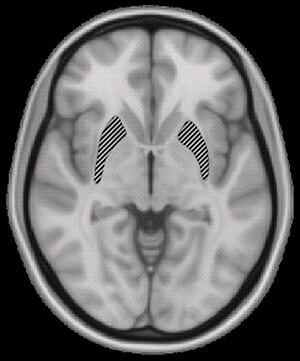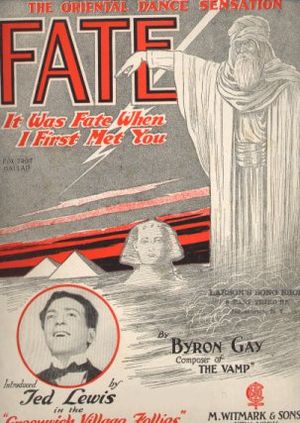Cerebrospinal fluid is a clear liquid that flows around the brain and spinal cord, and also fills natural voids in the anatomy of the brain, such as the ventricles and cisterns (the “empty” spaces in the brain as seen on MRI images). CSF serves several purposes. The brain and spinal cord are surrounded by CSF, the fluid in effect holding the brain in a state of suspension so that the weight of the organ is neutralized, keeping the lower part of the brain from suffering damage as a result of the total weight of the brain bearing down on it and pressing against the skull wall. In effect, the brain floats in a pool of CSF, which also acts as a cushion against sudden jolts or blows to the head. In instances where such trauma results in forces too great to be compensated for by the CSF, concussions can occur as a result of the brain crashing against the hard bone of the skull. Additionally, and no less importantly, CSF helps cleanse the brain of metabolic waste products, and also helps regulate the flow of blood through the central nervous system.
Most MS patients are familiar with CSF due to the ever popular and oh so pleasant procedure known as a lumbar puncture, or spinal tap. The stuff that the neuro draws out of your spine after sticking a spike into your back is CSF, which when analyzed can provide several indicators helpful in diagnosing the disease, such as oligoclonal bands, better known as O-bands. O-bands are an indicator of inflammation and immune activity going on within the central nervous system, an environment in which such activities are not welcomed. A vast majority of MS patients (upwards of 90%) have multiple O-bands, and the combination of CSF analysis and multiple lesions on MRI images are major components in completing a diagnosis of Multiple Sclerosis.
A number of recently published studies suggest that a breakdown in the natural flow of CSF can be quite detrimental to the central nervous system, and may be a driving force in the factors that culminate in neurodegenerative disease. One study (click here) discovered a previously unknown series of pathways that CSF follows throughout the central nervous system, providing new insights into the importance of CSF in the brain’s efforts to cleanse itself of potentially toxic metabolic waste products. Another study, done by Doctor Robert Zivadinov and the good people at BNAC, who are also doing extensive research into CCSVI, showed that CSF flow dynamics are altered in the brains of MS patients (click here).
Building upon the work of chiropractor Doctor Michael Flanagan, who has researched and written extensively on the role of CSF flow and neurodegenerative diseases (click here and here), another study, which used a specialized upright MRI device – known as a FONAR MRI – to scan MS patients, linked trauma to the upper neck and bottom of the skull to abnormal CSF flow and the eventual development of MS in study subjects (click here). This research, in turn, led to an ongoing investigation using FONAR MRI imaging in conjunction with a specialized chiropractic technique, known as Atlas Orthogonal, to demonstrate that not only is CSF flow abnormal in MS patients, but that this flow can be corrected by physically manipulating the Atlas bone, the uppermost cervical vertebra in the spinal cord. The bone gets its name because the weight of the entire head rests upon it, just as, in Greek mythology, the weight of the world rests on the shoulders of Atlas. This study is being headed up by chiropractor Doctor Scott Rosa and Doctor Raymond Damadian, the man who actually invented the MRI back in the 1970s.
The graphic below, which can be found at the information packed ATLANTOtec website (click here), nicely illustrates the detrimental impact a misaligned Atlas bone might have on blood vessels and nerves associated with the central nervous system:

In the above depiction, the yellow dot represents the vagus nerve, the blue dot the internal jugular vein, and the red dot the internal carotid artery. As the animation shows, a misaligned Atlas bone can put pressure on all three of these features, which, by appearances, one wouldn't imagine could do much good for the patient. Atlas Orthogonal chiropractors attempt to put the Atlas bone back into alignment using specialized techniques originated by Doctor Roy Sweat, which are taught at the Sweat Institute in Atlanta, Georgia (click here). The Atlas Orthogonal (AO) technique uses gentle pressure applied to the mastoid bone (behind the ear) to realign the Atlas bone, using a specialized table and an AO instrument carefully calibrated to each patient’s needs.
Since January, 2012, I’ve been taking part in the ongoing study being conducted by Doctor Rosa and Doctor Damadian, one of dozens of patients participating in the study. My involvement began with a trip up to Albany, New York, this past January, where I was scanned in an upright FONAR MRI that was outfitted with a prototype coil developed specifically to track CSF flow by Doctor Damadian, and which also utilized proprietary software to direct the scanning. After my initial scan, I was given an AO treatment, and then scanned again. Indeed, the differences between the two scans were rather dramatic. In my pretreatment scan, CSF flow was disrupted and seemed to double back and jet against my spinal cord directly at the spot where my one big lesion is located. After the AO treatment, the scan showed a much more normal flow of CSF, resulting in a larger amount of fluid separating my brain from my skull base, and a more steady flow of CSF throughout my CNS.
It’s important to note that Doctor Rosa is using his own carefully developed derivation of the original Atlas Orthogonal therapy technique, using FONAR MRI imaging to calculate very specific parameters and angles for treatment (known as “vectors”). Therefore, his approach differs from that done by other AO practitioners, so much so that it is patent pending.
I’ve been receiving weekly follow-up treatment here in New York City by Doctor Scott Bender, who is working closely with Doctor Rosa on the study, and has been trained by Doctor Rosa on these specific techniques. This is not to say that the techniques practiced by other AO chiropractors are not potentially helpful, but the precise methodology Doctor Rosa uses is, at this time, unique. If study results warrant it, Doctor Rosa plans on training many additional practitioners in his approach, but until that time the exact techniques being used in this study are generally unavailable except from the few practitioners that have already been trained under Doctor Rosa’s guidance.
Although Doctor Rosa’s study is still underway, initial results appear to be promising. Some patients are reporting symptomatic improvements, but it is still too early to draw any conclusions. My own experience has thus far not been successful, as I have not (yet) derived any benefit from treatment. I’m a very poor example by which to judge, though, since my condition is extremely atypical, and, as I’ve previously written (click here), has defied all efforts at definitive diagnosis. Additionally, my body seems to have trouble holding the AO adjustment. Some patients report staying in alignment for many weeks after adjustment; I’m generally out of adjustment by the time I go back for my weekly visit to Doctor Bender.
Although provocative, the findings and hypotheses of Doctor Rosa and his associates are sure to be controversial, for many of the same reasons that CCSVI shook things up. Both theories fly in the face of traditional MS dogma, and offer explanations for neurodegenerative disease that differ greatly from those proffered by mainstream neurology. Multiple Sclerosis is nothing if not complicated, and its pathogenesis is almost certainly multifactorial. It’s doubtful that any one theory will prove to be THE key to solving the entire MS puzzle, but, given proper attention, some of these “radical” theories may have the potential to unlock the many mysteries held by MS, even if they do so tangentially. Investigations into the widely accepted autoimmune theory have yet to offer up anything approaching a cure, and the exploration of alternative theories, done responsibly, can only benefit patients as researchers broaden their horizons and begin understand MS as not strictly an immune modulated disease confined to the CNS, but a condition involving yet to be understood degenerative mechanisms with systemic implications as well.
As always, hope is on the horizon, and patience is the key. Unfortunately, for those of us suffering from a progressively crippling disease, patience comes at a very high price.





